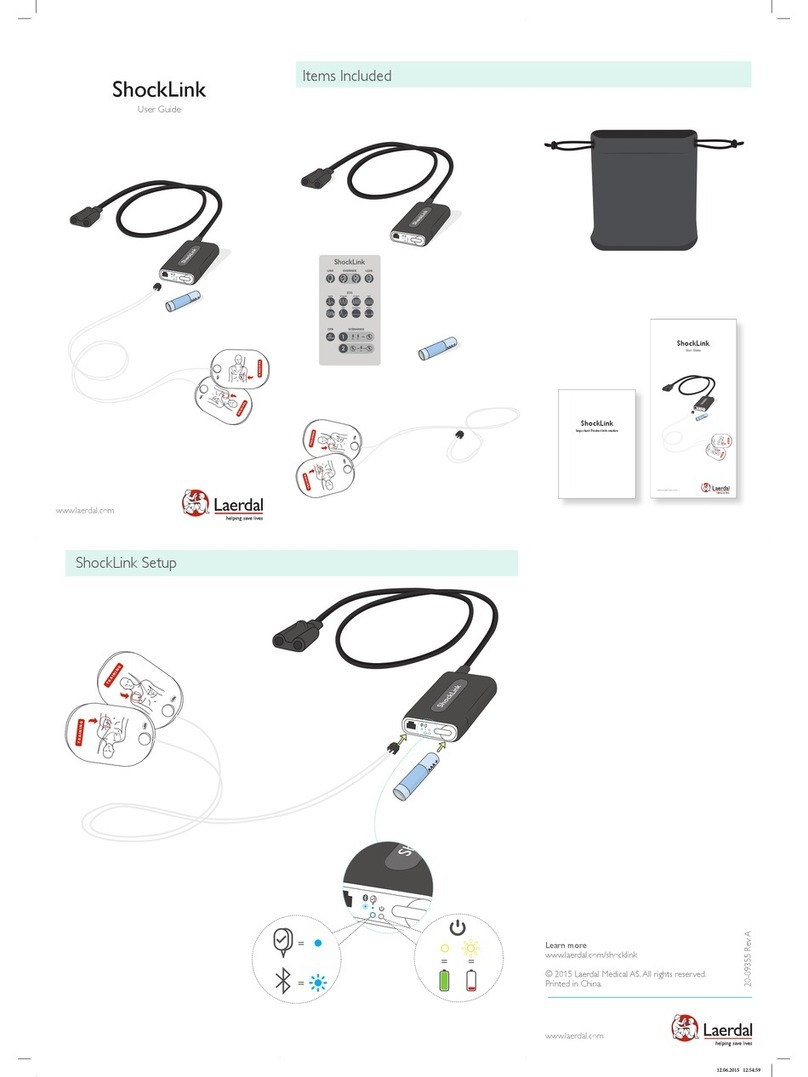Operating Software
8
Nursing Anne Simulator is operated and controlled by LLEAP - Laerdal Learning
Application and SimPad.
Laerdal Simulation Home
Laerdal Simulation Home is an application where LLEAP and other Laerdal programs
related to patient simulation can be found and started.The help files are also opened
from here. Laerdal Simulation Home is located in the Laerdal Medical folder under the
Windows start menu (Windows 7) and can be launched using the desktop shortcut on
Windows 8.
LLEAP
LLEAP is the instructor’s application from where the simulation session is run, controlled,
and monitored. Installed on a laptop, PC or tablet, LLEAP can be operated in Automatic
or Manual mode. Automatic mode is used for pre-programmed scenarios while Manual
mode allows the instructor full manual control over the simulation session. Running
simulations in Manual mode generally requires some medical expertise to create clinically
sound simulations.
SimPad
SimPad is a wireless customized tablet that controls relevant medical presentations for
simulation training, including debriefing, in various user settings.
There are two ways to control simulations, Automatic Mode and Manual Mode allowing
customized simulations to meet specific needs.
9
Operating Software
Other Applications
The following applications are available in conjunction with the simulation sessions:
• The Patient Monitor application emulates a typical hospital patient monitor. It is the
learner’s console and can be set up and controlled by the instructor, as well as by the
learner, through on-screen touch menus.
• Voice Conference Application (VCA) transmits all vocal sounds used during
simulation. It enables the instructor to communicate through the simulator during the
session.
• Session Viewer, SimView Server and SimView Mobile are applications that record
video and patient monitor screen captured during simulation, in addition to providing
an interface to debrief your session. After a session is ended, log files generated in
LLEAP and on SimPad are transferred and merged with the video files in Session
Viewer, SimView Server and SimView Mobile for the debriefing.
• License Manager for handling program licenses
• Simulator Firmware & Network Wizard for updating the firmware of the simulators
or troubleshooting network problems
• SimDesigner for configuring your own pre-programmed scenarios. It can also be
used to analyze and print out a graphical representation of a scenario. SimDesigner
must be installed to allow conversion of legacy instructor application files to LLEAP
compatible file formats.
• Network Selector in Laerdal Simulation Home helps users connect LLEAP and
Patient monitor to a wireless network and even host a network (Windows Hosted
Network).
• Theme editor allows creation of themes for the SimPad system when operating
using Manual Mode
For a full overview of all applications and their help files, start Laerdal Simulation Home.






























